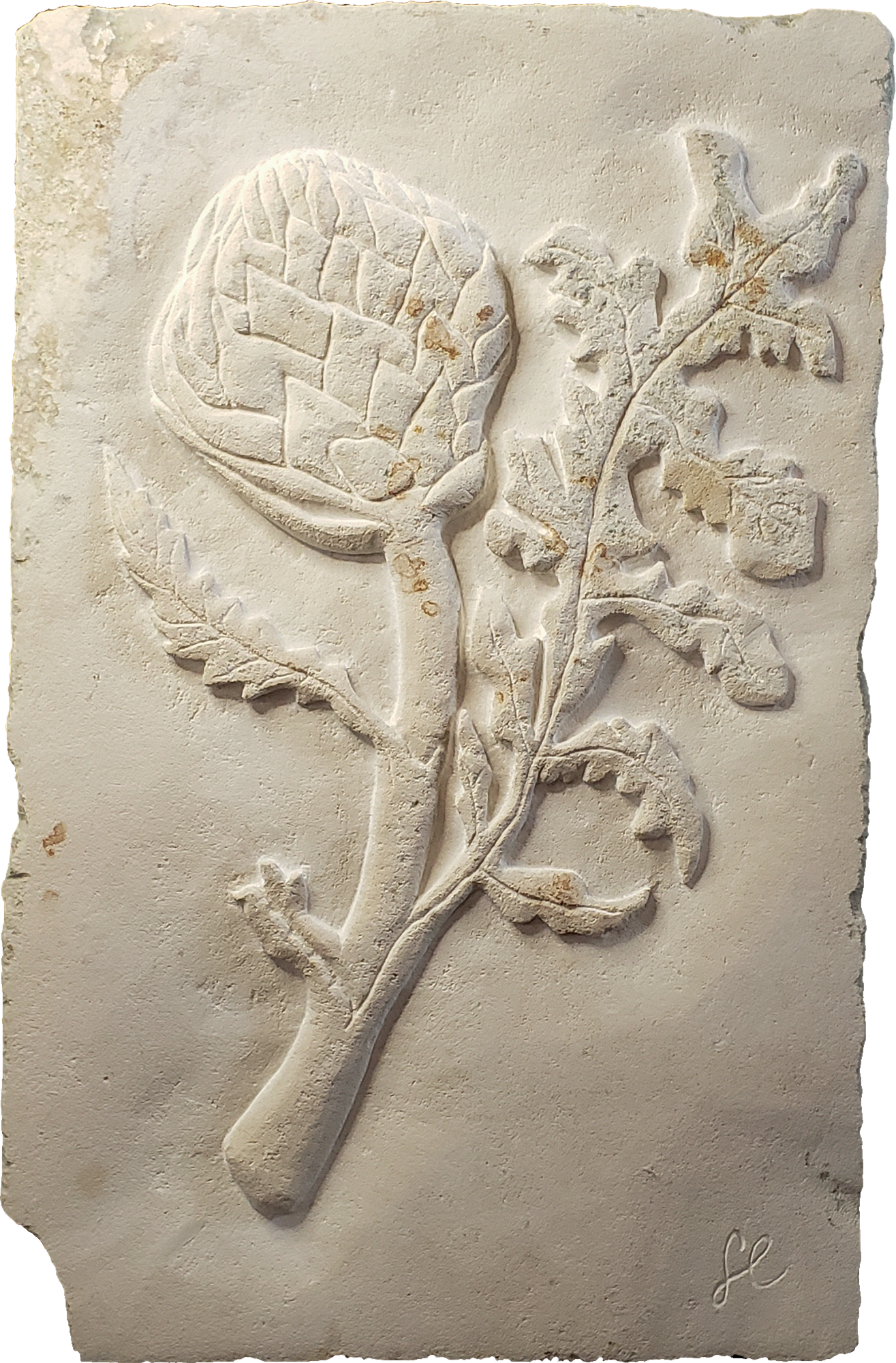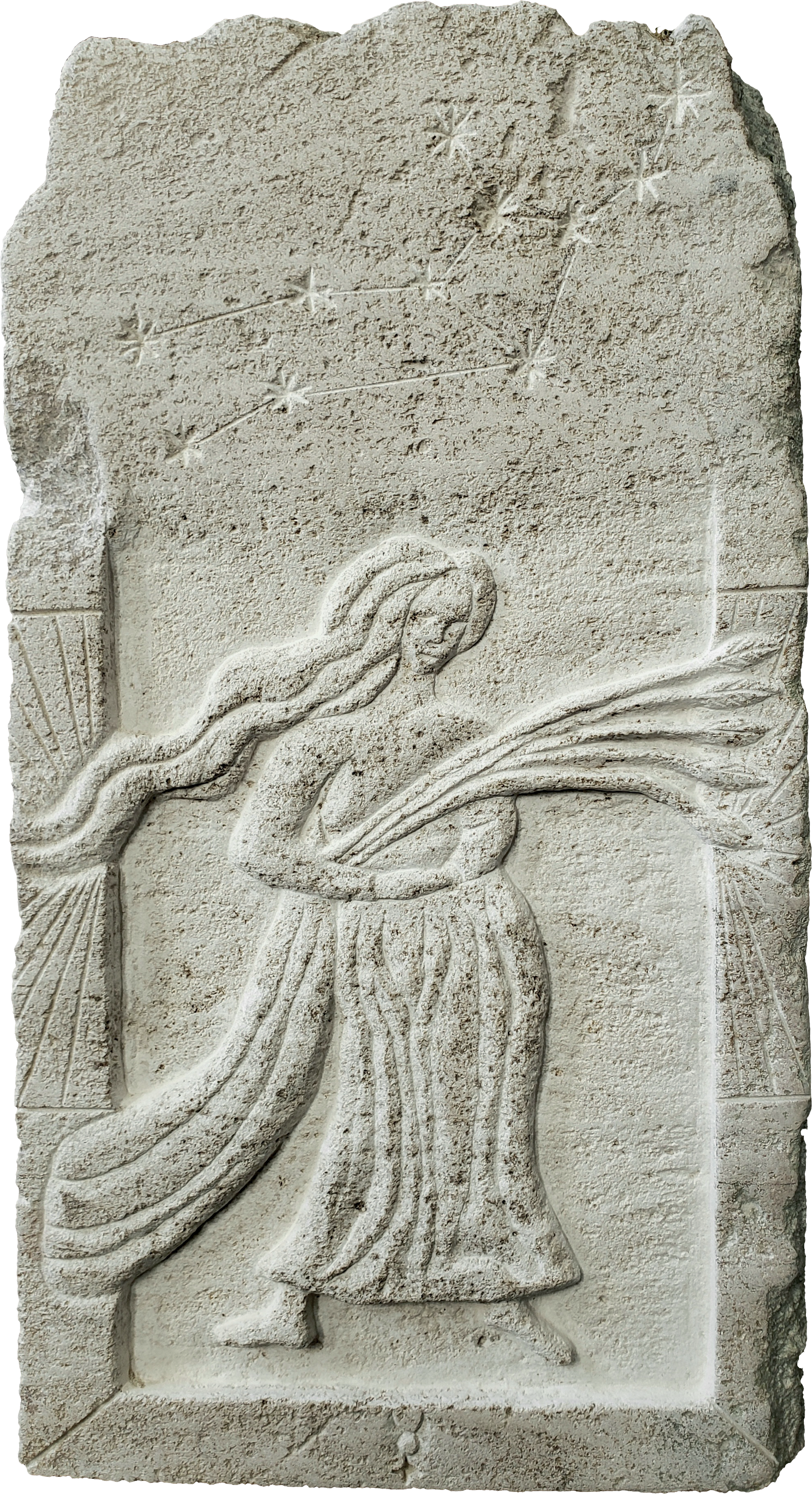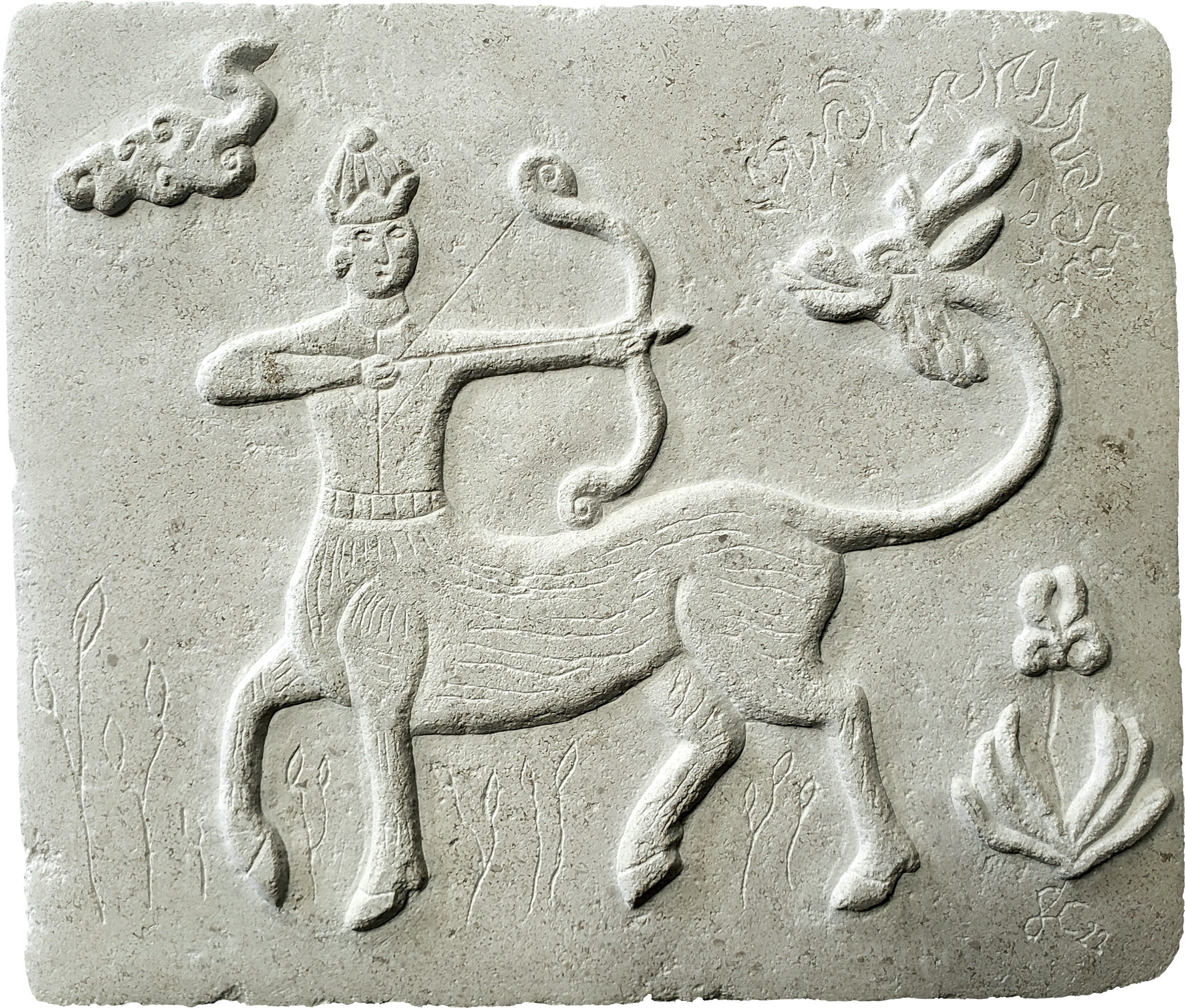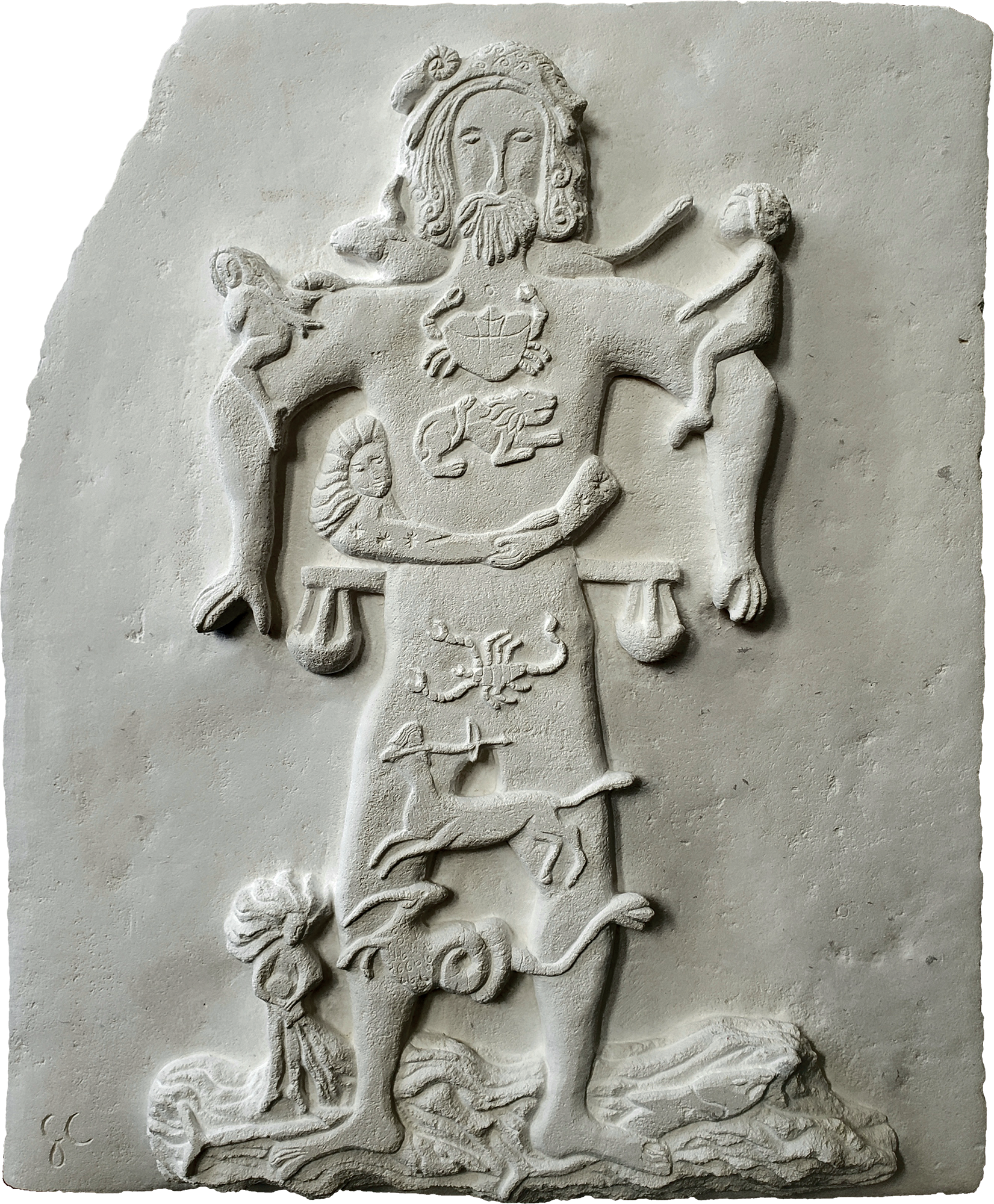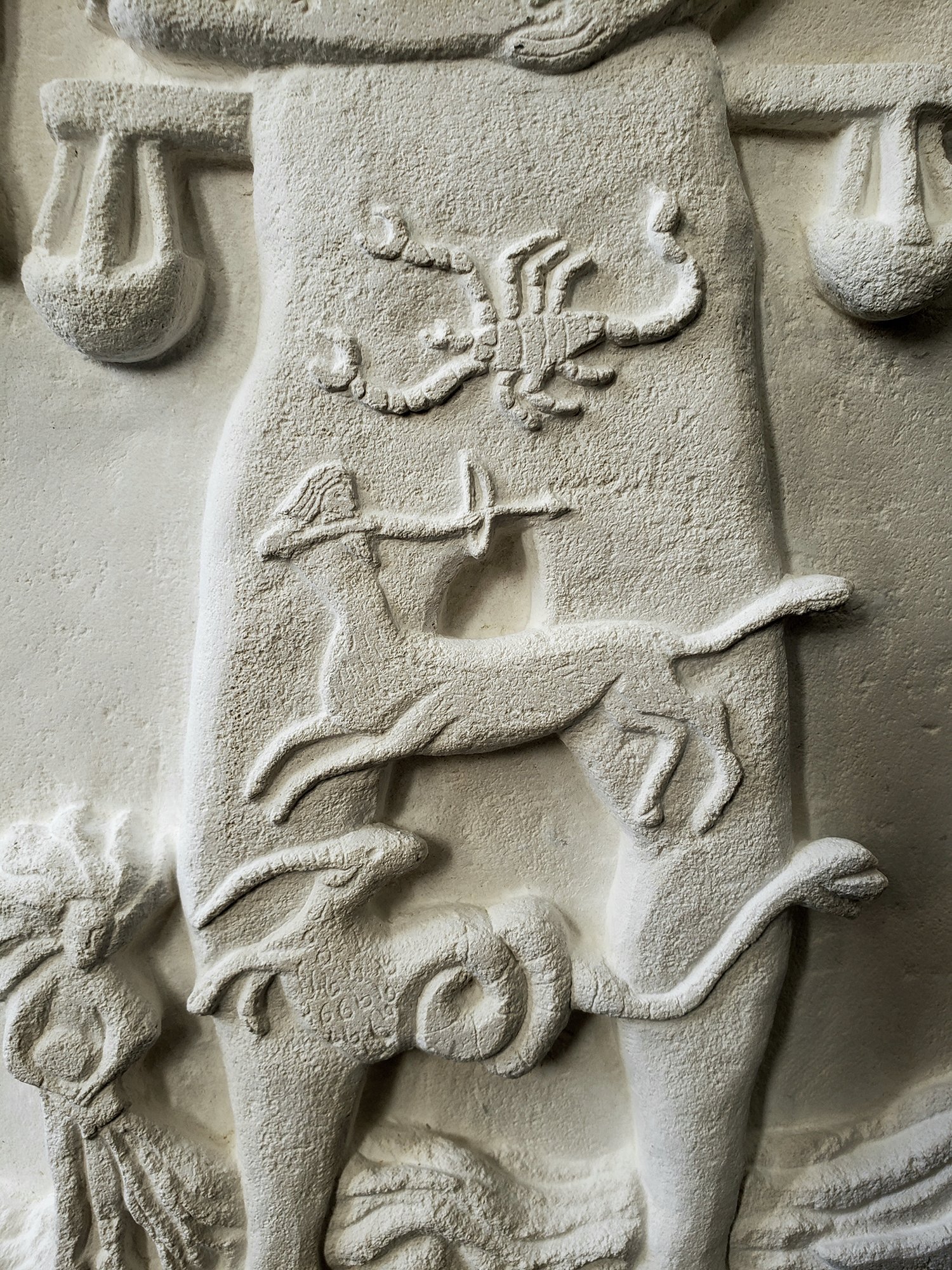Guillaume Campredon
À fleur de pierre
Steered by the Brittany winds and a bountiful imagination, 32-year-old sculptor Guillaume Campredon engages in a body-to-body wrestle with the material. From his millenary gesture – stone carving – are born works of art where fantasy and reality are intertwined. So many figures and stories that speak of eternity. Guillaume questions our relation to the world.
What is your craft?
I carve and sculpt stone, directly with my hands and hand tools. So no power tools. I don’t depend on any other energy than my own. I start from a rough block. Everything happens through touch. It’s a sensual approach. My tools are centuries old. I strike with a sledgehammer by percussion. I remove shards roughly with a steel tip. Then I use scissors to smooth the surface and the toothed chisel, that brings a new materiality with its small teeth, to trace furrows or draw hair for example. You can sense that this is an ancient type of handiwork.
Which of your pieces has made the biggest impression on you?
In Brittany I participated in a project in the Gulf of Morbihan at the Pointe du Blair: the renovation of a house (in ruins since 1911) on a tip facing the sea for which I created monsters. Granite blocks, inspired by gargoyles but in a timeless, contemporary spirit so not necessarily medieval. Because I draw my inspiration from a diverse heritage. To bring this facade to life, I had fun carving monstrous human or animal mouths that seem to be gushing out. Tied to the rock on my scaffolding, I was facing the elements off of this granite vessel- the wind, the sun, the sea - in the summer heat. I came out of it every day like a hallucinated hermit. In one month, I produced nine pieces, a tour de force!
Is your work particularly physical?
My first tool is my body: my back, my neck, my hands, my arms. This body-to-body contact with the material clears the mind and I dive into a meditative state. Stamina is key.
“My first tool is my body: my back, my neck, my hands, my arms. This body-to-body contact with the material clears the mind and I dive into a meditative state. Stamina is key.”
Your body itself is sculpted by the work. Do you prepare physically or have some kind of ritual?
I sculpt three days a week and stretch for two hours in the evening. My body is in constant tension during work, I come out broken. So I go swimming. The water feels good, bathing in another element, making for a clean break with the stone. I also practice yin yoga which leads into meditation, the idea being to let the body breathe and the muscles rest.
Your work is solitary.
I like these moments of solitude when I find myself alone on the façade. But recently I have experienced working collectively. I was selected by the Académie des Savoir-faire of the Fondation d’entreprise Hermès for the year 2023. I find myself amongst people who share a similar love for stone. It’s humbling to work with a material that is beyond our understanding. We can always learn from it and from others. It’s a program of on-site master classes given by experts. Then we meet a few months later for a final workshop, we all leave together for two weeks to produce an object, a collective art piece, like a cathedral.
Is your art figurative?
Yes, but I can add abstract finishes like the movement of wind on water, waves in the hair or a beard.
If you were a stone...
I would be a sedimentary rock, a limestone like the ones I collect during my walks in the west of France. It would be solid but not too chalky, a medium on which to inscribe a dream, express what is inside me. A connection between the inner world, contemplation and the concrete, real world.
If you were a plant...
A weeping willow. I grew up next to the Étangs de Corot in Ville-d’Avray, in the Paris region, and I always noticed this tree while out on my walks. I love its melancholic shape. Before I started sculpting, I had a romantic, melancholic tendency. This plant is aquatic, terrestrial and aerial all at once. It lives in an in-between world, its roots sinking into the depths of the water, and rising back up through the mud.
If you were a character from a myth or legend...
The temptation of St. Anthony, a man alone in an inner desert, facing his demons, who must succeed in taming them. This story speaks to me, the solitary dimension. The triptych of Jerome Bosch in Lisbon comes to mind (Museu Nacional de Arte Antiga).
Some of your works have the title of Zodiacal Man. What does it mean?
This term has a poetic force. It’s an artistic pattern in the astrology of the Middle Ages, where each part of the body has its corresponding sign. I wanted to sculpt this theme in relief and bas-relief. To work on this integration between the human body and the zodiac. For example, I am Virgo Sun and Cancer rising, the Virgo corresponds to the belly and Cancer to the solar plexus. I’m still working on this theme: the zodiac and its signs (“L’homme zodiacal” exhibition at Galerie Jean-Pierre Respaut, 92150 Suresnes, France June 2023). I’m moved by the beauty of astrology, there is an aesthetic, a very wide range, illuminations, medieval or oriental engravings. I’m strongly drawn to icons. I also like Romanesque art, the false innocence in the strokes, the chimeras. Man is placed in an in-between. This porosity between fantasy and reality speaks to me. There lies the poetry of these representations. I like the freedom in the stories, in the depiction of the world. I actually worked on the image of the monster for my thesis.
What is your relationship to astrology?
I discovered sculpture through astrology. My wife is an astrologer and she was the one to introduce me to it. I was preparing a thesis in semiology (the study of signs) but I always knew I wanted to do something artistic, I always felt a calling in that direction. At one point I wrote poetry... One day I met an astrologer who drew my birth chart. I was questioning my life path, looking for change. While talking with her, the word sculpture just came out of me. She told me: “Go ahead, do it! Get your hands in it!”
That’s where it all began?
I finished my thesis in 2021 all while sculpting twice a week in one of Philip Peryn’s workshops in Paris, a libertarian workshop. We just had the stone, our hands and our manual tools. I fell in love with it all, the smell, the dust, the tools. It became instantly clear. I knew that’s where I belonged even before I started working with the material. The rest of the time I sculpted in the bathroom of my small Parisian apartment in the 18th arrondissement. The theme for my first exhibition in 2022 (“Exposition de sculptures” city gallery in Suresnes) was “Bestiary and mineral garden”. Then I sculpted in our kitchen in Paris, I hung my shower curtain every morning to protect the room from the dust and then packed up at the end of the day before dinner time; and family life. I felt like I was living the myth of Sisyphus, endlessly starting over again and again! (Smiles.) Now we are moving to Brittany where I’ll have enough space for a workshop.
When did you feel happiest or most fulfilled in your work?
Precisely during the construction of the site at the Pointe du Blair in Brittany! I felt an intensity in the pain, the physical tiredness that brought me towards a modified state of consciousness, a state of deep joy, almost mystical. Up on my scaffolding was like being on the mast of a boat, I was living in sync with the tides, my hands were doing the talking.
When you need to reflect or take some time away, what do you do?
I go for walks in nature, in the forest of Ville-d’Avray or Le Bono, in the Gulf of Morbihan, where there’s also a river. Or I go to the wild coast in Quiberon. This is a good way for me to separate from the stone by connecting to another element. When I need to think I do my best not to think. I try to clear my mind and fill my hands.
What is your attachment to the Gulf of Morbihan in Brittany?
I didn’t know this region before, my wife’s family lives in Le Bono and we got married there. I immediately fell under its spell. The salt water, the tides, fjord like landscapes, the islands, the edge of the forest ... We spent our lockdown there. Our first child was growing in the womb while we were living there. I started a permaculture vegetable garden. That process nourished my mineral garden. I was drawn to the earth, to rooting through gestures and manual work. I experienced a rebirth, I was of the world.
What are the most important steps in your work?
There are two key moments: first, the choice of the stones. I pick them during my wanderings. They are often salvaged stones, from a collapsed house or picked up in a field. I found limestone in Charentes. I give new life to stones that have already had a life. There’s often a specific factor that manifests itself when I sculpt, a smell, for example that of the river on the edge of which I found this stone in Charentes. In Brittany, the house where I made the gullets and gargoyles had burned down. When I sculpted the façade, the smell of fire came up. The second key moment is when I start to rough cut the stone with the scissors and the toothed chisel. I bring out the exaggerated features, the arches, the nose, the mouth. I see the caricature of the future sculpture. And right from the start it’s magical! It’s the first draft.
How does the final step unfold?
It’s where I finally get to meet my piece. The last stroke of the scissors. I caress the stone. There is a feeling of energy being transferred, that the stone will soak up and be charged with.
The theme of this issue is “Once upon a time”. How does this inspire you?
To me it speaks of reality, far from the artist’s fantasy. “Once upon a time” relates to a tale rewritten with each sculpture, a work of labor.
If you could live in another era...
It would be prehistory! There is an abundance of majestic fauna and flora – rhinoceros, lion – on our land. We see it in the painted caves. The movement in parietal art is so pure. A gesture at once shamanic, social and cultural more so than artistic. There is something powerful.
It’s a movement to make society. For example, in the Chauvet cave (editor’s note. Paleolithic cave in Ardèche), we descend into the depths of the earth, into darkness.
We found panels representing horses and a wood fire, they drew the features of horses captured on the spot with such beauty, timeless elegance and purity of lines.
What is your dream work that you have not yet accomplished?
I would like to do something that I have not yet done for lack of space: a large poetic fresco in bas-relief where I would question the place of man in his environment. A fantasized paradise. Something in the spirit of Alfred Janniot’s bas-relief at the palais de la Porte-Dorée in Paris or Gislebert’s Temptation of Eve (1130) which adorned the lintel on the portal of the Saint-Lazare cathedral in Autun, I would like to find this aesthetic. I also like the Assyrian bas-reliefs, like the lion hunt of Ashurbanipal (British Museum, London), which moves me to tears. I would like to create a link between all these time periods, a contemporary work that evokes something spiritual, mystical, not intellectualized, just something beautiful. A contemplation of the beauty of Life by being in this spiritual connection with the gesture. A dreamlike landscape that would be the story of a genesis, Creation. A return to faith. I feel the need to be anchored in the material, in the tangible.
Interview published in Blumenhaus issue #4
More about Guillaume Campredon art on gcampredon.com - @guillaumecampredon
Interview - @sabine.bouvet
Pictures - Esther Kingten & Guillaume Campredon
Make sure to visit Guillaume’s new exhibition "Un Jardin Mythique" from June 28th to 30th 2024 at Galerie Jean-Pierre Respaut, Esplanade Jacques Chirac - 92150 Suresnes.


